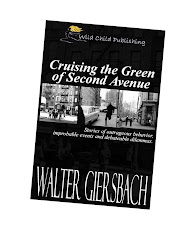I suppose it was revolutionary when the codex replaced the papyrus scroll, just as the e-book reader is replacing the bound volume. But more critically, is the actual writing keeping up with readers’ expectations? Is stylistic form following function?
Not likely.
In 2008, Yume Hotaru's first novel became a best-seller in Japanese bookstores; he wrote it entirely with his thumbs. His First Experience, a story about love and sex in high school, became a top title in one of Tokyo's biggest bookstores.
 |
| Keitai shosetsu, composing with your thumbs |
Since it emerged in Japan nearly a decade ago, the cell phone novel – keitai shosetsu —
has moved from a subgenre to a mainstream literary phenomenon. Today, keitai shosetsu sites boast billions of monthly users, while publishers sell millions of copies of cellular stories taken from phones and turned into paperback. By 2007, half of Japan’s 10 best-selling novels were written on cell phones, (For more, go to http://www.keitai-shosetsu.com/.)
I began wrestling with this thought a few years ago when netspeak began appearing on cell phones. (“R u listening? Lol.”) And, to some extent, leet (733T) speak became a secret code. (I was so proud of myself when I deciphered someone’s e-mail address — disbm3g — as a phonetic of her name.)
Kathryn Schulz, book critic for New York magazine, calls Twitter a valid literary form. Imagine, art contained in 140 characters! But, forget limits that are more stringent than 100-word drabble. This is how people communicate!
Last week, a neophyte writer in our bricks-and-mortar group read her e-mail diary: Letters written to herself. While the writing was rough, it was insightful in an epistemological way. I think she’s on to something, if it can be polished. In fact, she’s probably better than I at reaching young adults who can no longer read or write cursive English, and who have no familiarity with Roman numerals.
This is why I’ve been experimenting to see if new fiction forms can get us through the century. “Big Biz @ the Mall” was a trial run at the quotidian way people communicate via Facebook and instant messaging. (“Big Biz” appeared in Issue 4 of The Corner Club Press,, pp. 50-51, at http://thecornerclubpress.weebly.com/uploads/6/0/5/3/6053731/the_corner_club_press_issue_4.pdf)
Im startin to like this dude with his hair fallin in his eyes. But don’t get any ideas cuz Im married w/ kids and dont fool around. I say okay Ill confess. I peed on the phone. I thought there was a pregnancy app.
“Movin to the Moon” was published in The Story Shack last year, and moved the language a bit further ahead. (“Movin” is at http://thestoryshack.com/2013/01/05/movin-to-the-moon/#respond, under the pen name of Carolyn Foulkes.)
“R u suffering a midlife crisis” she asks, all serious like Dr. Phil.
Just a tiny one I tell her, but it might be PMS. Then I see a guy w/ a mic interviewing people. Hes got a PA system and is wearing a necktie so I know it’s the real deal. I shout ITS SHOW TIME!!! All the geri freaks wake up and stare. “Time for Beauty and the b***h!” I shout to the old guy near me.
Hard to read? Jarring to those literate senses honed in English Lit 101? Yes, it might be. In fact, I’m sympathetic for those 3rd century Romans wondering why they stopped making scrolls. We’re moving into an age of Google knowledge and Wikipedia wisdom. It will be unlikely to find readers who think clearly, grasp basic rules of grammar and syntax, and can communicate without Spell Check and Auto Correct. Rather soon, I’m sorry to say, writers whose world is bound up arguments over the Oxford comma will be so perfectly adapted as to be extinct.
Hard to read? Jarring to those literate senses honed in English Lit 101? Yes, it might be. In fact, I’m sympathetic for those 3rd century Romans wondering why they stopped making scrolls. We’re moving into an age of Google knowledge and Wikipedia wisdom. It will be unlikely to find readers who think clearly, grasp basic rules of grammar and syntax, and can communicate without Spell Check and Auto Correct. Rather soon, I’m sorry to say, writers whose world is bound up arguments over the Oxford comma will be so perfectly adapted as to be extinct.


